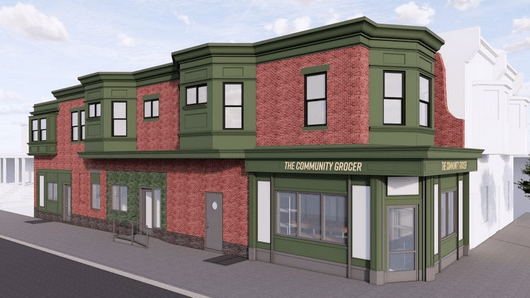The test consists of one question: Can a child safely go from their home to a nearby store, purchase a popsicle, and then return home before the popsicle melts? For many in the Triangle, the answer is unfortunately no. The type of business that would most likely provide such a tasty summertime treat – the corner convenience store or bodega – is absent from almost every neighborhood in the region.
And this isn’t from a lack of desire on the part of Triangle residents either. No scientific polls on the subject exist, but many of the people I have talked to in my personal life have expressed their desire for a corner store in their neighborhood. Whether it be my father reminiscing about the corner store near his neighborhood growing up, or a car-less college student wanting somewhere in walking distance to purchase a six-pack and some Combos, or parents looking for a place nearby for their child to independently access a tasty treat, the general consensus seems to be that corner stores fill a much-needed niche. But there are reasons – fixable reasons, mind you – that, despite this desire, the Triangle appears to be a corner store desert.

Let’s think for a moment about the places where corner stores pop up. In order for a corner store to operate and remain profitable, it needs customers and it needs a good number of them within walking distance. According to Principles of Urban Retail Planning and Development by Bob Gibbs, “approximately 800 to 1,000 households are needed to support the average corner store.” And according to a 2003 report from the Environmental Protection Agency and the Local Government Commission, an area needs a density of seven units per acre in order to sustain a walkable corner store.
Some back-of-the-napkin math, that would mean that (at minimum), we would need to have 800 to 1000 households over the space of 114 to 142 acres. And according to the United States Census Bureau, the average household size in Chapel Hill is around 2.46 people. An area would need a density of around 11,000 people per square mile in order to sustain a corner store. Simply put, there are very few places in the Triangle that have that level of density, mostly concentrated around the downtown cores of Chapel Hill, Carrboro, Raleigh, and Durham, and the campuses of UNC, NC State, and Duke.
Now, it is important to note that “11,000 people per square mile” is the level of density needed to sustain a corner store, but you do not necessarily need 11,000 people in order to sustain one. For example, Census Block Group 1 in Orange County’s Census Tract 117 (an area that contains much of West Franklin Street and parts of the Cameron-McCauley neighborhood) crams nearly 800 households in an area of 134 acres, hitting the mark with Gibbs’ estimates. Accordingly, there is the Target on Franklin Street, and several convenience stores and corner markets in and around that neighborhood.
Compare this to Block Group 2 in Census Tract 114, a low-density area just northeast of downtown off of Franklin Street. In an area double the size of the previously discussed neighborhood, there are fewer than half as many households. In this type of neighborhood, a neighborhood market or corner store cannot possibly survive; the client base for such a business does not exist within the confines of the neighborhood. Gibbs does state that the, “number of required households [required to sustain a corner store] can be reduced significantly if the store is located on a major road carrying 10,000 or more cars per day.” I imagine the assumption can be made, however, that most would prefer a more walkable neighborhood over a major, busy artery running through their neighborhood.
In order to acquire the amenities that we want, the ones that would make our town more sustainable and livable for its people, the conclusion time and time again is that we need to densify. To make our town more walkable and bikeable necessitates making the town dense enough where daily needs can be reached by foot or by bike, and where those needs can be economically sustainable.
And the point should be made that we need not Manhattanize ourselves to achieve this level of density; much of Carrboro either fits this density or comes close to it, and much of the compliant areas are composed of single family homes, duplexes, quadplexes, and low-slung apartment buildings. But areas where there is a luxury single-family home monopoly will not pass this test.
A future where every neighborhood in the Triangle passes the popsicle test is possible. We just have to make the necessary policy changes to get there.
